I was up in Glen Clova with friends for the weekend and on Saturday, which was wild and very windy, went for a walk up Glen Prosen with Helen Todd who works as campaigns and policy manager for Ramblers Scotland. Our intention was to take a closer look at the restoration of the hydro scheme (see here) at the head of the Glen.

However, on passing this Fenn Trap in a cage tunnel, just beyond Glenprosen Lodge, we decided to add a little more purpose and interest to the walk-in by photographing every trap we could see from the road.
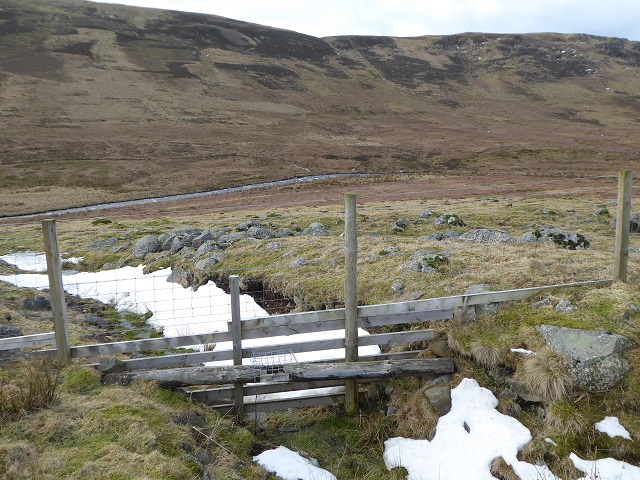
There are two stories here, the clearance of wildlife from the land in our National Parks and the reaction from the Scottish Gamekeepers Association to Helen for daring to raise this as in issue on twitter yesterday.
To all those who have been incited by this post to damage traps, it is a criminal offence @policescotland @HelenRambler is this tweet a @ScotLINK official viewpoint?
— Scottish Gamekeepers (@ScotGamekeepers) February 11, 2019
SGA’s response shows just why it is now totally discredited as an organisation. Its tweet is anonymous, unlike Helen’s. It uses Helen’s openness to mount a personal attack by referring to ScotLINK – Helen once served as chair of Scottish Environment LINK. It wrongly suggests that by showing photos of traps Helen was inciting people to damage them. And its bullying, “Police Scotland will be informed”.
From this exchange it appears that the SGA, and the landowners who back it, don’t believe the right to freedom of speech should extend to questioning how land is managed. Even in our National Parks.
Interestingly though, this afternoon the SGA appears to have acknowledged that it has gone too far with a whole blog on the subject of the twitter exchange (see here). This includes their own take on the right of freedom of speech in which they try to portray themselves as the victims. There appears little point in engaging in that debate directly but instead I will use the photos as the basis for some critical commentary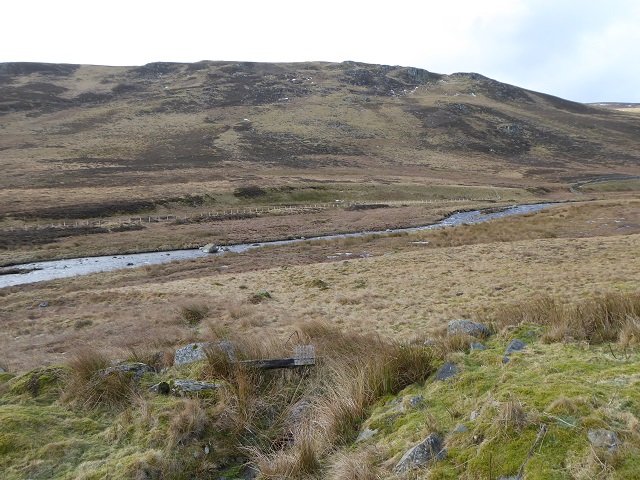
Trap No 3All the upper part of Glen Prosen where these photos were taken lies within the Cairngorms National Park.
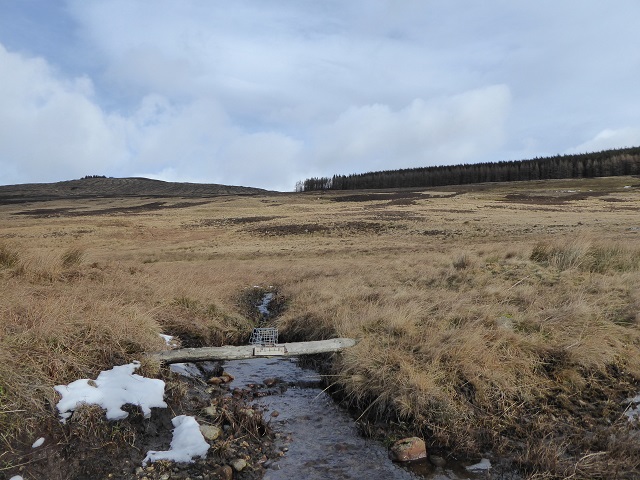
Forestry Commission Scotland own the Glen Clova Forest and, at the parking area just before Glenprosen Lodge, warn walkers about the wildlife camera traps in place in the forest:
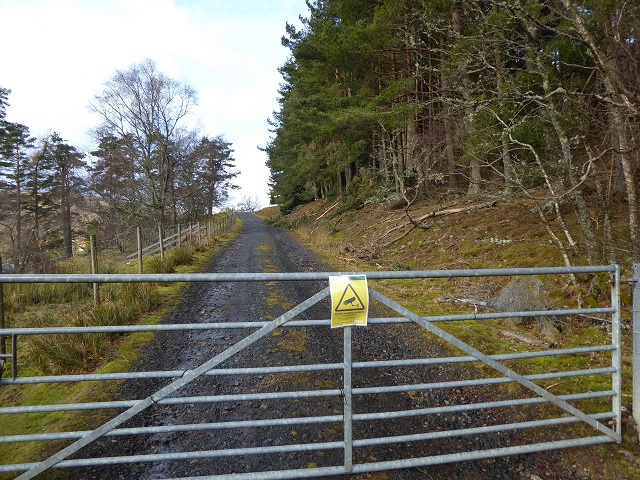
While the public purse is being used to monitor what mammals live in the forest through camera traps, all around the Glenprosen estate is using a very different type of trap to eliminate wildlife. This illustrates the current incoherent approach to land-use within the Cairngorms National Park.
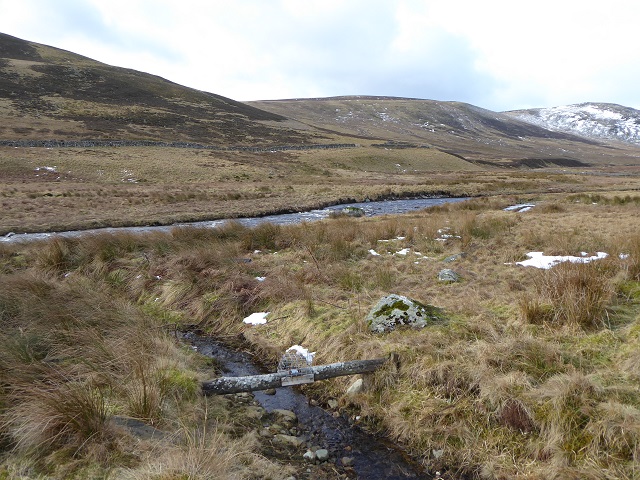
The law permitting the use of these traps is the Spring Traps Approval (Scotland) Order 2011. The traps need to be placed in a tunnel ‘suitable for minimising the chances of capturing, killing or injuring non-target species whilst not compromising the killing or taking of target species’. There are no rules or guidance on the size of the tunnel openings, that is left to the landed estates.
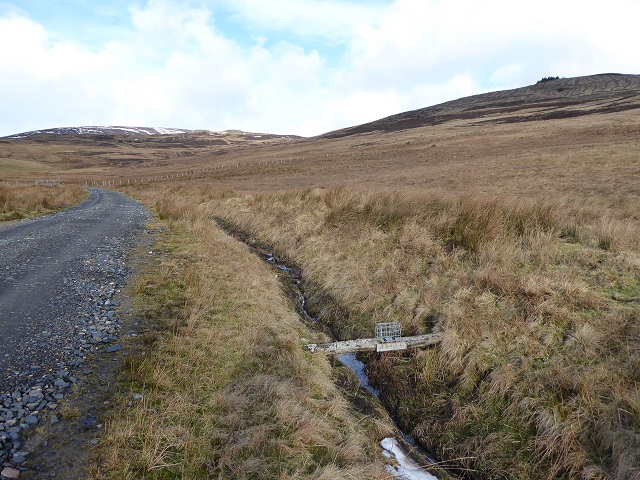
Its therefore not possible for the non-expert or the person without a measuring tape – beware of getting too close, the SGA might accuse you of interfering with the trap – to tell exactly which species these traps are intended to destroy. The “target” species are likely to be weasel and stoat which prey on the gamebirds and grouse being farmed on the estate.
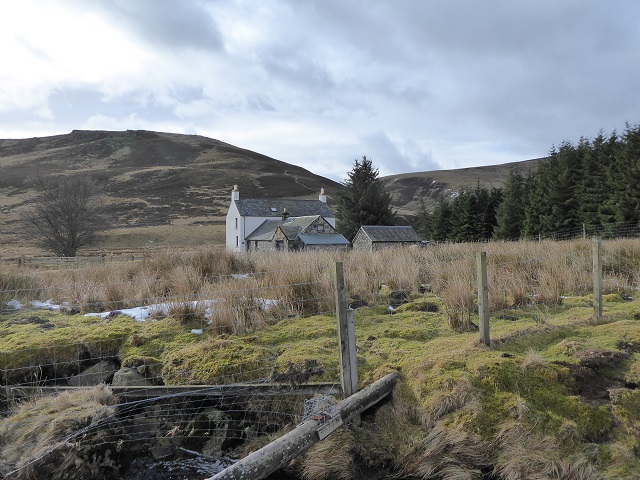
There were a cluster of traps around Old Craig:
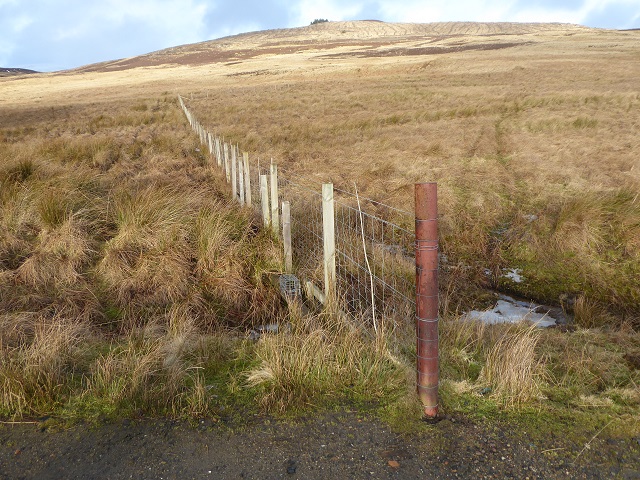
We missed this trap, just opposite the one above, on the way out but spotted it on the way back.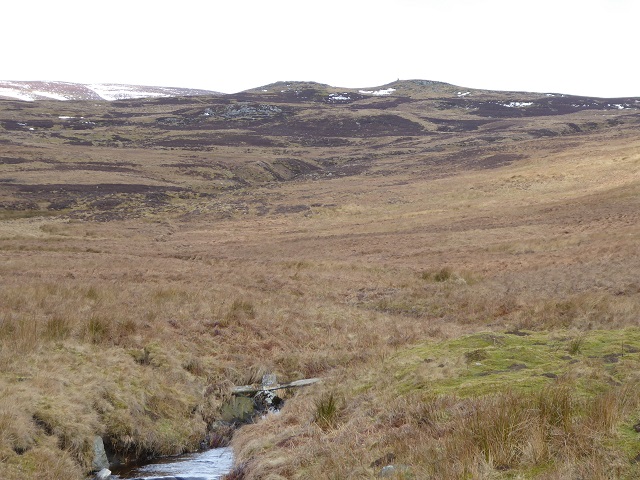
Trap No 9While we may have missed a number of other traps, they are placed by the road for a reason. It makes the traps much easier to manage. They can all be checked in a half hour round trip up in a landrover.

That is a primary reason why so many estates are constructing new roads into the hills, it makes monitoring traps and other measures associated with the intensification of grouse moor management much more “efficient”.
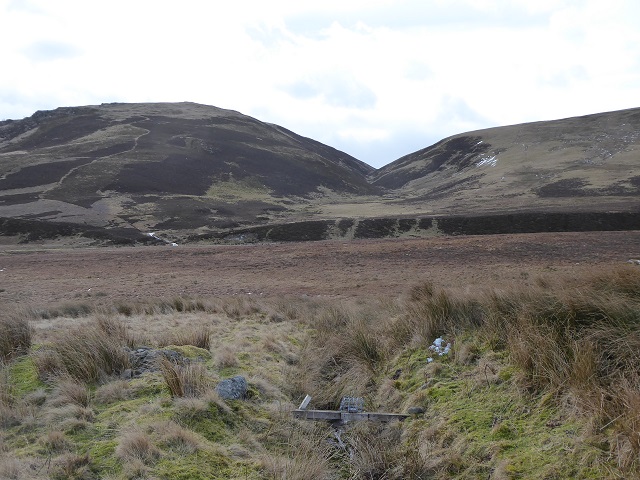
The road up Glen Prosen has been there for some time, though there are now three new roads at the head of the glen, two to the new hydro intakes and one to a line of recently constructed grouse butts.

The SGA in the twitter exchange refer to areas such as this as a workplace but the fact is that grouse moor management supports relatively fewer and fewer jobs because the extensive road network which has spread over most of the Cairngorms makes it possible to manage moorland with fewer and fewer people. Its becoming ever more obvious that alternative forms of land-use could support more jobs.
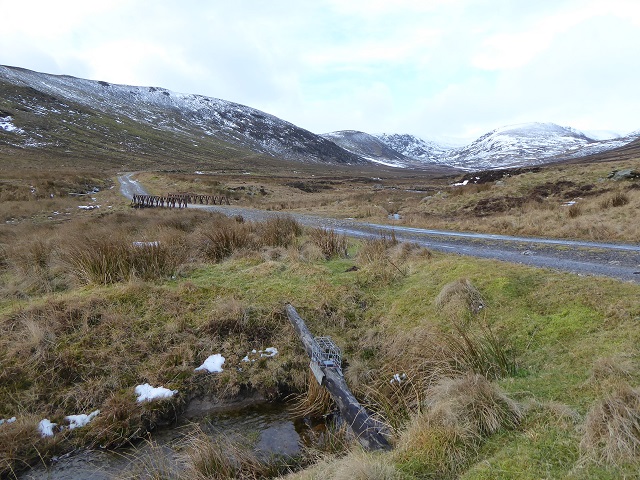
There was another cluster of traps near where the road crosses the Prosen Water. The reason being that the road bridge acts like a wildlife funnel for animals like stoat and weasel trying to cross the main river.
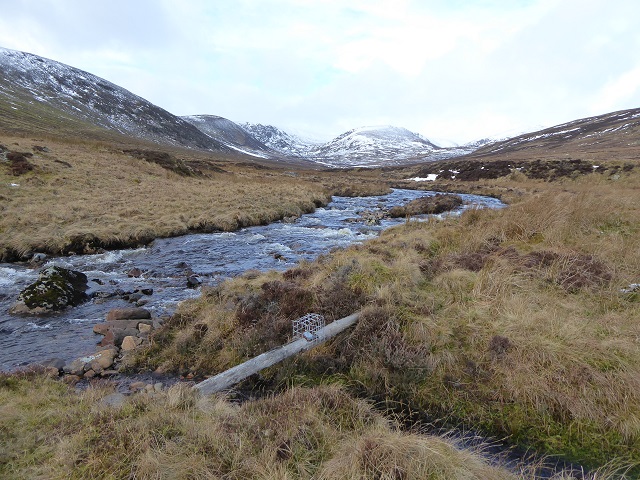
It would be interesting to know how many animals have been caught in these traps, the scale of the destruction that has been taking place here and in other places. Yet even in the National Park, there is no record of this.

The first (and primary) statutory aim of our National Parks is “to conserve and enhance the natural and cultural heritage of the area“. So when did anyone ever agree that small mammalian predators such as stoat and weasel were not part of that natural heritage?

The SGA in their tweets states its a criminal offence to interfere with traps. That is legally correct. Its also fair to conclude that this shows just how far our laws have been devised to favour sporting estates before wildlife.
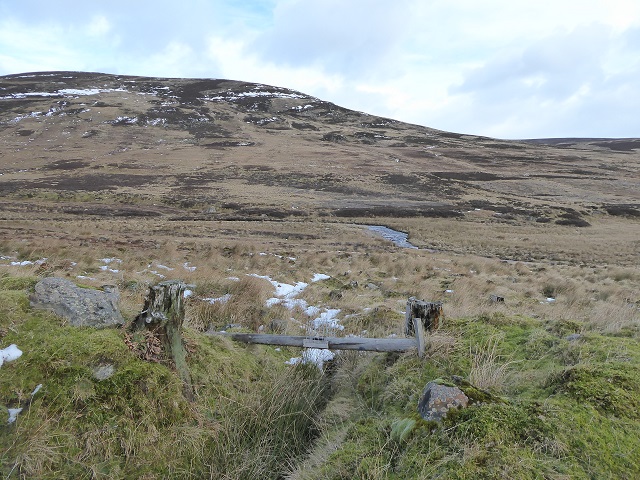
Our National Park Authorities, however, have the power to make byelaws for conservation purposes. They could make it a criminal offence to kill the wildlife which it is currently being persecuted throughout our National Parks whether by traps or by shooting. That however is not yet on their agenda. It should be.
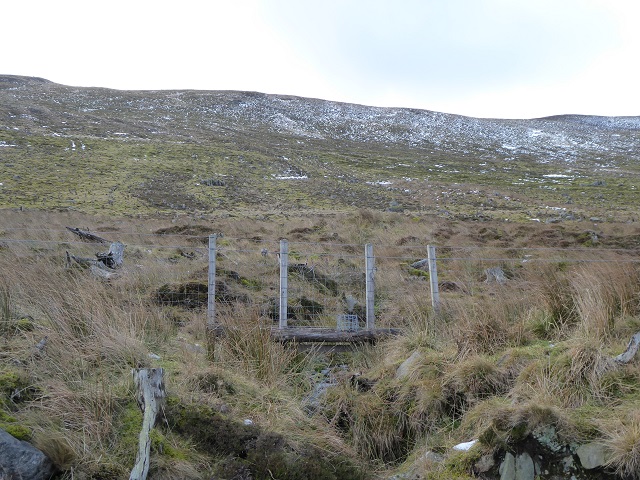
The Werrity Revew into grouse moor management (see here) will not address this issue. Its remit is to consider the issues that result in illegal persecution of wildlife, not the persecution which is currently quite legal under the law.
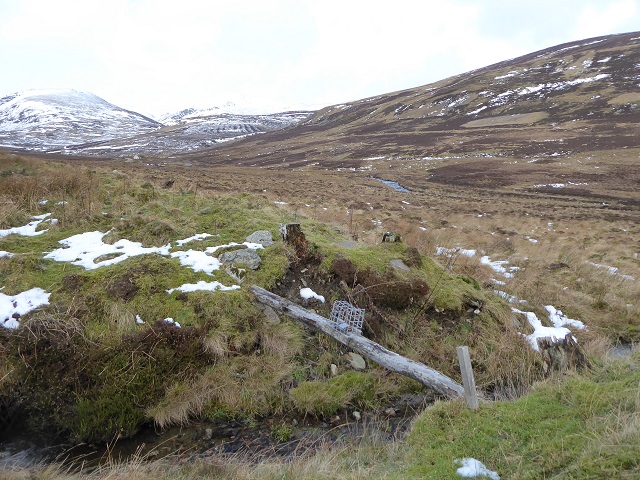
While some persecution of other wildlife, particularly mountain hares, is related to grouse moor management, much of it is not. Pheasant and red legged partridge production is economically more important than grouse farming in the Cairngorms National Park and the constant persecution of foxes, stoat and weasel is as much related to those sporting interests as it is to grouse moors.
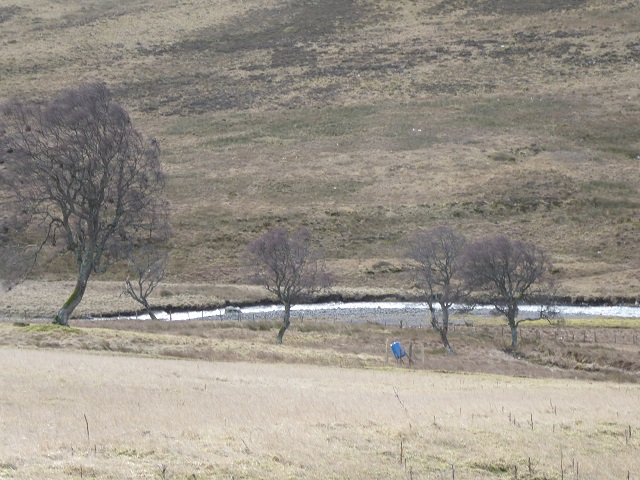
Even in upper Glen Prosen, not all the wildlife persecution is related to grouse moor management.

The Werrity Review therefore has relatively limited relevance to addressing the issue of wildlife persecution in our National Parks and there is no reason for our National Park Authorities to await the outcome of that review (due out in June) before they do anything further to consider how they tackle it. (The Cairngorms National Park Authority is involved in recruiting special constables and a project to improve the information transmitted by satellite tags on raptors).
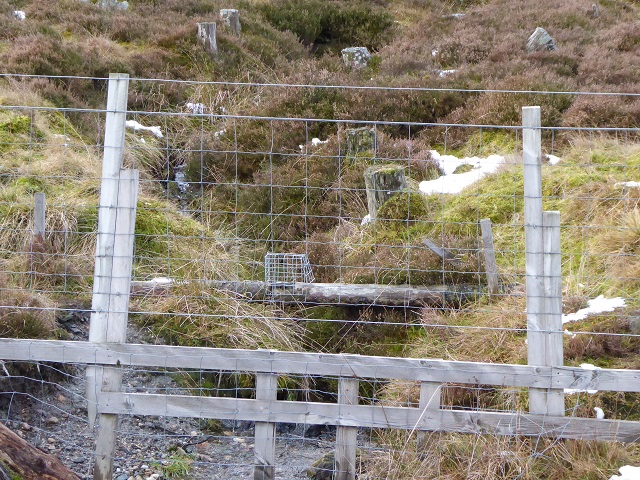
Instead our National Parks could and should be considering how they could be setting new standards for protecting wildlife as a whole. That is what most people believe our National parks should be about.
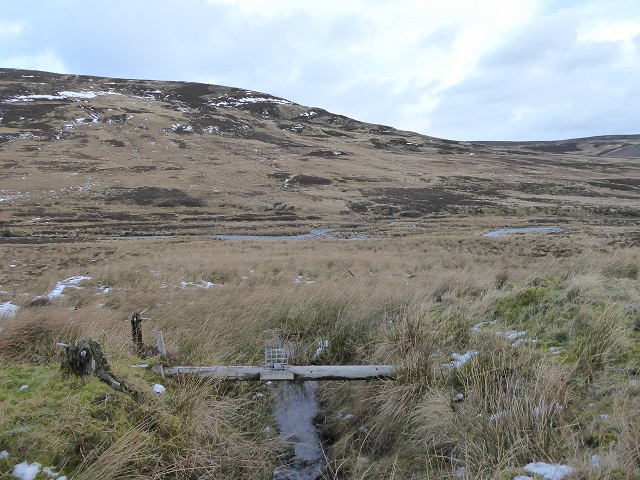
My reaction as we saw more and more traps was initially to feel depressed. Just how can we be allowing this in our National Parks. There is another way of looking at it though. Despite all these traps – and Glen Prosen sits in the heart of the Angus hills where there is possibly more wildlife persecution than anywhere else in Scotland – our native predators still survive. Why else would there be all these traps? They are attracted of course by all the farmed game birds, easy prey, but this is a war that our landed estates can never win. The predators will always try and move back.
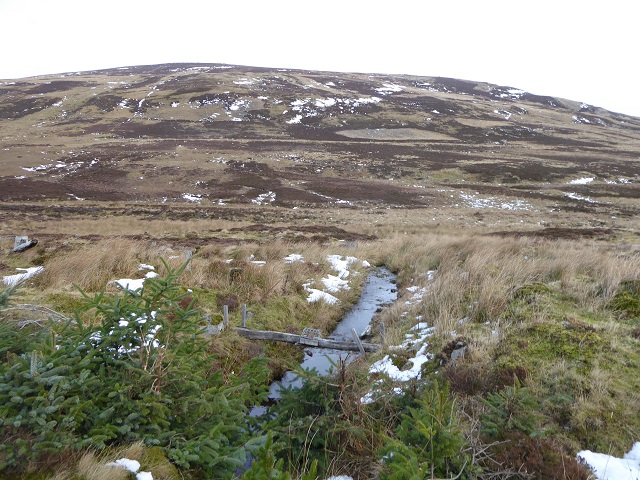
I was reminded of that earlier in the morning when on the way to Glen Prosen when we stopped and watched two Red Kites hunting in Glen Clova. I found out the next day, from the Glen Clova Ranger, that he had counted no less than 7 Red Kites in the glen one day last month. We should be shouting this from the rooftops and, if Red Kites fail to nest successfully this summer, which on past record is only too likely, shout that from the rooftops too.
Where Red Kites should be nesting, unlike where stoats should be seen, is within the remit of the Werrity Review.
How much better it would be if, instead of sporting estates employing people to eliminate wildlife that is not game, those same people – with their undoubted wildlife protection skills – were employed for conservation purposes? Instead of employing people to work in killing fields, how much better it would be if gamekeepers were employed to re-wild – and given better paid jobs and secure housing to boot. Unfortunately the Werrity Review has been tasked at looking at the “valuable role of gamekeepers in rural Scotland” rather than alternative ways their skills might be used. That is a license for continued wildlife persecution. That’s not the gamekeepers fault, its that of the landowners who at present have almost total freedom to decide how the land is managed.
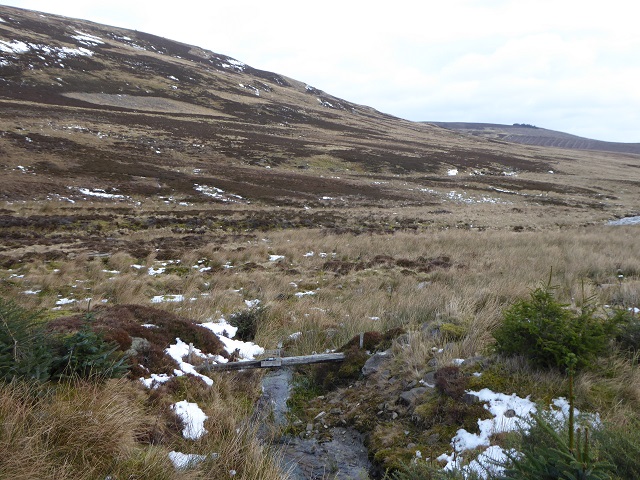
In the past, I have photographed traps haphazardly and never bothered to try and count them. I would not have anticipated how difficult this would be without photographs. After the first half dozen we lost count and without the photos would have no reference. I hope more people will start to record them systematically and broadcast this on social media – just like Helen did.

The building at Kilbo has been nicely renovated. Its hard to tell for what purpose, though my guess is that its to provide a good lunch spot for parties coming to shoot grouse on Cairn Dye. If so, that tells you something about the priorities in this glen.
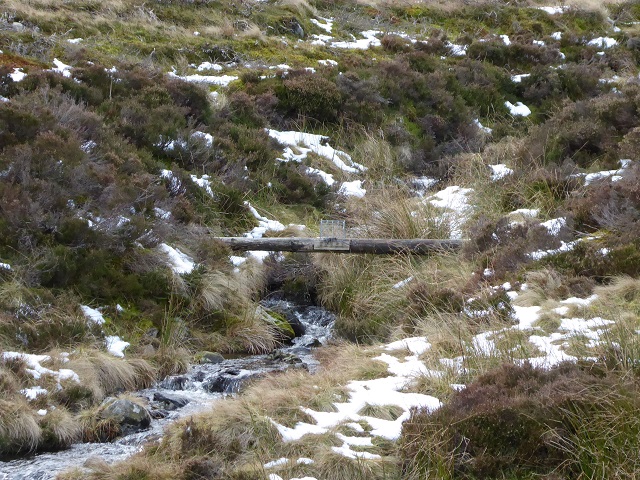
We saw just one trap above Kilbo – perhaps the roads are too new for the estate to have had time to install traps? – but plenty of other signs of more intensive grouse moor management.

Helen reckons she took photos of 27 traps, I have 26. Some will no doubt claim that this shows we don’t know what we are talking about. I believe it shows we are asking the right questions.
What does it say about the conservation purposes of the National Park that on one 5km stretch of road there are at least 26 traps? How many traps are there in the Cairngorms National Park as a whole? I believe its the duty of the Cairngorms National Park Authority to find out. Just like with Mountain Hares they need to start evaluating the true level of wildlife persecution that is taking place in the National Park. Then, more importantly, they need to introduce measures to fulfil their statutory objective to conserve the natural heritage.

Freedom of Information request?
As far as I am aware our National Parks do not collect this information but I will ask. One might have hoped that the estates involved in the “signature” east Cairngorms Moorlands Project – which is supposed to be driving sustainable grouse moor management in the National Park – would be reporting the number and purpose of traps in operation on their land.
Is it illegal to set off a Fenn trap in England ?
yes
Not necessarily! In most cases it is illegal but there are defences in certain circumstances. See response below to Simon Tucker
If on moorland and you see a sign saying “protect wildlife at all times” and you see a trap within 20 feet of said sign, what should you do?
If you are a person who believes what you read on signs and always respects the law, you are in an impossible quandary – make yourself feel better by taking photos and putting out all over social media (REVIVE should help) and do something by calling on our powers that be to resolve the fundamental contradictory approach of our law at present which favours species chosen by landowners above all others
Take a photo/photos. Don’t touch it. Take a note of the location. Send the info to OneKind. They will no doubt send someone out to it to check out whether it is legal.
Alternatively, if you know the law, check it out and contact the police or RSPCA or the RSPB. The police rarely have the specialist knowledge and sometimes ask for a reference number from the RSPCA or RSPB before they’ll take it up so I’d contact the RSPCA or RSPB first.
As you correctly state the law says that the trap should be placed in a tunnel to minimise non target species. None of these traps are in a tunnel- dictionary definition “ an underground or tubular passage”- and also the mesh size is contrary to minimising the capture of non target species. In my opinion these traps ( and all others like them) are all illegal and should be reported to the police.
One of the problems is the law here is really vague but I agree that one way for people to increase pressure for a change in the law is to report traps to the police.
Nick – I think you are mistaken. Snares need an ID but not traps. The relevant legislation is https://www.legislation.gov.uk/ukpga/1981/69/contents
I have corrected my comment thanks
it is only illegal if you get caught….. if for example i was carrying a 25lb hammer and were to accidently drop it on the traps as I attempted to manouver past them that would be a shame but a total accident. But there again I care more about animal welfare and their health than I do about a few bits of wire which could easily be recycled into something useful such as a car door or a nail that might get caught up in the tyres of a gamekeeper or two.
Actually Stuart its illegal whether or not you get caught but there are only personal consequences if you get caught. I am not someone who believes that every law should be upheld. Some laws are unjust/wrong and there is a place for deliberately breaking them but people need to be aware of the potential consequences, particularly if they take action individually. Perhaps its time for a more collective public protest? The law can come down on that too, as we have seen recently with the Stanstead 15 but the fact that there were so many involved at the end of the day probably contributed to them not being sent to prison
Ironically, the accidental killing of Foxes, deer and hares( and any other unfortunate creature ) by hounds is perfectly acceptable in law, despite the Hunting Act which forbids it.Accidents do happen it seems…….
So which bit is the trap? The spring, the spring in the cage or the spring in the cage on the log?
it seems that it would be possible to move the log without touching the cage or spring?
The actual trap is a Fenn trap. This is supposed to be anchored with a short chain to the log inside the tunnel. The tunnel is supposed to have an entrance at either end (a run through trap) which is designed to exclude non target species. The logs are placed on regular animal tracks where the animals routinely cross the brook. Obviously if animals can cross without getting wet they will use the log. It is common practice, when these logs are first set up not to set the trap to encourage regular safe use of the log and tunnel by the target animals. Here the species will probably be stoat.
You would be guilty of criminal damage if you moved the log.
Stewart. The legal defences to the offence if criminal damage is here:
https://www.legislation.gov.uk/ukpga/1971/48/section/5
S5(2) is interesting.
I have always believed that the Killing Vermin exercise that all Keepers are so obsessed by, serves no useful purpose whatsoever, other than to demonstrate to the landowner that their Keeper is actually doing something to justify his wage & tied house.
When I worked as a Keeper on a 4,000 acre Pheasant shooting estate myself, I know that we snared around 100 Foxes each year, so literally as fast as you killed one, another one moved into that area, thus rendering the action – utterly pointless.
It is absolutely disgusting that this outdated Victorian style of orchestrated destruction of so much of our wildlife, both the legal & of course especially the illegal forms, is still allowed to be carried out across such vast areas of our countryside.
You can be sure that if these Trap Lines are so numerous by well trodden public access routes, they will be of an even higher density in areas of private estate which are much less accessible to the public.
As a former Keeper myself, having used these Traps myself over a number of years, I firmly believe that it’s high time these barbaric, indiscriminate implements of torture were outlawed in the UK.
Have to say that this is a most outstanding post.
Animal traps, snares and poisons in favour of recreational killing are an insult to humanity.
Report every instance to Revive, and RPUK.
One Kind is doing a campaign against snares. I’m sure they’d be interested in traps as well.
I have written to the Grouse Moor Management group at Holyrood and part if my submission was to say that snares and stink traps, often set side by side, should be made illegal. The Scottish government is more enlightened than Westminster on this issue.
I worked as a ghillie in Glen Esk in the 80s. The keepers’ year was basically 6 months shooting deer and 6 months shooting foxes. They complained that the Forestry Commission didn’t cull foxes in nearby plantations so there was a ready supply moving in to replace those that were shot. I remember one of them said, “Thank goodness for that!” He meant that it gave him a job he loved, days on the hill with his dog and his gun, and stories to tell in the gun room. So, for the benefit of a few rich people and even fewer keepers, the wildlife and wild lands in which they live are paying a hefty price.
I never saw such intense trapping in Glen Esk but I remember the factor threatening that without at least the possibility of a 400 brace day, jobs would be on line. Today, the Glen Prosen website says:
“Glenprosen Estate continues to develop and grow with a long term investment programme in place to secure this as one of the finest sporting facilities in the country.” It goes on to mention roads and grouse butts – but not the dozens of traps needed to get grouse numbers up, nor the medicated grit to deal with ill birds that would be the first to fall to predators.
A culture change is clearly required if sustainability is to be more than a slogan. This won’t be not an easy process, but the CNP authority needs to make clear the direction we want to go in by holding the landowners to account – requiring data on all wildlife killing would be a start. And for the rest of us, we can measure and photograph traps, collect trap ID information and report to the police where the law is not being applied.
Mike hi, We met years ago up the glen …. are you back in Scotland?
Why would one have National Parks without indigenous wildlife?!
More and more as I read about LLTNP management it obvious they have lost their way on ideals of a Nat Park and are not serving the general public but this news here would have one suspect landowners more for their singular profit, ….. and not for environment and ecology reasons for which, as I understood it, was the point of their creation.
“Its also fair to conclude that this shows just how far our laws have been devised to favour sporting estates before wildlife.” Nick Kemp
One way to look at it I suppose.
Some may argue that there is in fact more diversity and density of species in these managed environments, so it could logically be said the trapping favours wildlife.
For example more ground nesting birds, not just grouse (an important economic driver for sure.)
I mean let’s look at the gardens of your homes. I bet the species numbers are lower than had it been left wild or at least just different. (Is housing an economic driver 😉 ?)
Whatever landscape you choose to take a point of view it has all been managed to some extent and as such there is no pure ecosystem as such.
Hey Ho perhaps an upland estate in the Cairngorms should be left to go totally wild to see what happens.
“Some may argue that there is in fact more diversity and density of species in these managed environments”
Then they’d be completely wrong, because ‘diversity’ doesn’t mean eradicating all native predators that should exist on those moors. Have you visited many? They are barren and depressing areas, managed purely to support red grouse and a few other species benefit as a result. Raptors, mustelids, foxes, corvids and mountain hares are all systematically persecuted – in what world does that equate to diversity, unless you’re trying to justify such selfish and destructive behaviour?
Without breaking unreasonable and unjust laws there would be no universal suffrage; and our whole society would be much poorer for the vast majority.
The law surrounding the trapping and killing of our predatory species is not fit for purpose and needs to be replaced with a better set of laws. As such, I see taking what is currently criminal action to be a matter of conscience, and coming across lethal traps set as a general killing aid, I would have no issue in destroying them.
In that case, you need to think about your defence.
The Criminal Damage Act 1971 gives a few options as a defence. S2 and S3 have been used by defendants in cases involving criminal damage and conspiracy to commit criminal damage to traps, snares and other implements.
The defence in S5(2)(a) would rely on the assumption that a landowner would not object to the destruction of an illegal trap etc on their land. That defence could not be used on a legal trap or snare.
S5(2)(b) has been used is cases of the destruction of GMO crops next to organic farms where GMO crop pollen might cross pollinate organic crops and thereby contaminate the organic status of organic crops. I suppose if a pet (property) or livestock (property) was found in a trap or snare then releasing the animal from the trap using reasonable minimal force would constitute a defence to a charge of criminal damage for a number of reasons. The act of trapping / snaring a pet or livestock without obtaining prior permission from the owner is a criminal offence of criminal damage of private property. A defence could be launched under S5(2)(a) as explained above. Alternatively a defence could be made under S5(2)(b) since a trapped pet or livestock would be in imminent risk of fatal injury without the protective measure of seeking immediate veterinary attention so the urgency to open the trap would be immediate.
For the above defences you would honestly have to believe that the owner would agree to the protective / crime prevention measures you were intending to take or actually took.
I am not encouraging you to take any action against traps or snares but you sound like you need legal advice. Think carefully before you make any rash decisions.
I should tell you I am not a solicitor but I have worked in courts and I have helped in a number of court cases.
I suggest you have read up on the Langholm moor disaster eh sorry project carried out by the RSPB. Keepers and predator control were removed in an attempt to “rewild” the estate and the wildlife numbers plummeted including the hen harriers they so desperately wanted to conserve. As a result they brought back in keepers and predator control guess the outcome…..
Among the conclusions of the Langholm study is that when the law is respected, raptors including Hen Harriers and Peregrines increased in numbers, making the grouse moor economically unviable.
Throughout the research period gamekeepers continued to kill foxes, crows, stoats etc.
Then you need to go back and read the conclusions, because you have it completely wrong. Also, it wasn’t even ‘carried out’ by the RSPB, so you can’t even get that part right.
Yet Jon the RSBP didn’t use predator control on its Dove Stone reserve to get wader numbers up, just habitat management which was the same story when they worked with FE to increase ground nesting nightjar in Drumfresshire. The return of predators was actually seen as part of the reason that black grouse and capercaillie increased in Strathspey. Of course the return of the pine marten is helping the red squirrel by eating the grey ones. The otter and probably polecat help drive down mink numbers. Then there’s the issue of keepers not creating but destroying real habitat mosaics via muir burn. I’m pretty sure the Langholm results weren’t as clear cut as they were made out to be, what about the role of fluctuating vole numbers re hen harriers? At the end of the day there’s not one single species that didn’t manage to exist for thousands of years without grouse moors, and still does abroad. An awful lot just can’t live on them now, bats, juniper, dwarf birch etc and even black grouse are largely pushed to their margins. You are trying to sell a pig in a poke.
I not defend Estates or traps but if you want two see birds and wildlife when out on your walks, then predators need to be control. The pheasant and other game birds you see are only their because of controlling fox stoat weasel (I don’t like to use the word vermin) and being raised by Estates. Most ground nesting birds eggs and young are taken by fox stoat and weasel the predators then move in on the Estates so you do need controls or their would be no wildlife two see only predators, and they would died off throu illness and hunger. Glasgow had thousands of hedgehogs toads frog’s newts ,25 years ago the fox moved in to Glasgow l not seen hegehogs for 20 years even the blackbirds numbers are well down as the fox can climb small trees to get the nest if the magpie not beating the fox to it or the sparrow hawks in their thousands killing blackbirds so now I don’t hear the dawn chores you need control .At the Pond Hotel pond in Glasgow they had around 300 swans it was amazing two see but the foxs were killing the swans, so the council put a island in the middle of the pond, this only cause a breeding ground for one pair of swans which chased off the other hundreds of swans Glasgow loss out on a Gt place to take the famlie and more because they would not deal with the fox problems. No one complains about the grey squirrels being trapped in their thousands to save the red squirrels. What about the animal rights people who release thousands off mink. Water bailiffs are trapping mink and fighting a lossing battle two save our wildlife on our rivers, voles ducks moorhens frog’s. In defence off the fox stoat weasel wee took away the main food supply the rabbit throu maxamatos. But if their is no control wee will loss most of our ground nesting birds curled,snipe, plover, lapwing, grouse,ducks,moorhens, grebe even the capercaillie which was used as a excuse to kill off around 60 walabs on a loch lomond island a golden opportunity loss for tourism. So next time someone vandalised a trap the stoat or weasel that may have being trapped could be destroying the nest or young of a ptarmigan or black throated diver
“The pheasant and other game birds you see are only their because of controlling fox stoat weasel”
Nonsense. Why should we be killing native and ecologically vital predators, to boost numbers of an introduced, alien game bird species? You’re out of touch, because the last thing people want to see are pheasants, which often end up in stink pits.
The camera traps in Clova forest that you mention are for monitoring Wildcats. By the way, the keepers on Prosen estate are also involved in setting up Wildcat camera traps and monitoring them. Your point about traps needing identification labels … they are only needed for Larsen, Funnel, Ladder or Multi-catch crow traps. The wire mesh gauge that the majority of rail or bridge fen traps use in the Angus glens is perfectly legal and the entrance apertures are a max of around 5cms. This is a much better system than the old chicken wire enclosures and nail post entrances. I have checked hundreds and very few are illegal …. I have found some recently in Grampian region with only a fence wire loop over the bridge fen trap, consequently police interviewed the keepers and the traps were removed.
Wildlife licences are needed to set up larsen, ladder, funnel and other bird traps. Details on the types of licences and when they are needed are held here:
https://www.gov.uk/guidance/wildlife-licences
The bird traps you mention do not need IDs in normal circumstances. To set up a bird trap you need to apply for the appropriate type of wildlife licence for the purpose of the ‘need’ to trap birds. Most bird trap licences simply require the applicant to look online at the conditions outlined in the standard General Licence form for the purpose of using the trap stated eg protection of crops or livestock and then comply with those conditions. I have not heard of ID being required for individual licences but I accept ID tags for bird traps may be required in those circumstances. They are not the usual situation in which bird traps are used.
Ap read what I said if their is no control on predators their will be no ground nesting birds native or others so what your thoughts on the mink being released killing our native wildlife which was a deliberate act and the water balifs trapping mink in traps to save our native wildlife. I am happy two see all wildlife native or others on our island
Bill
The traps in these pictures are very similar to the ones all round loch Freuchie in the news today with hundreds of dead crows floating(dumped ) in the water .